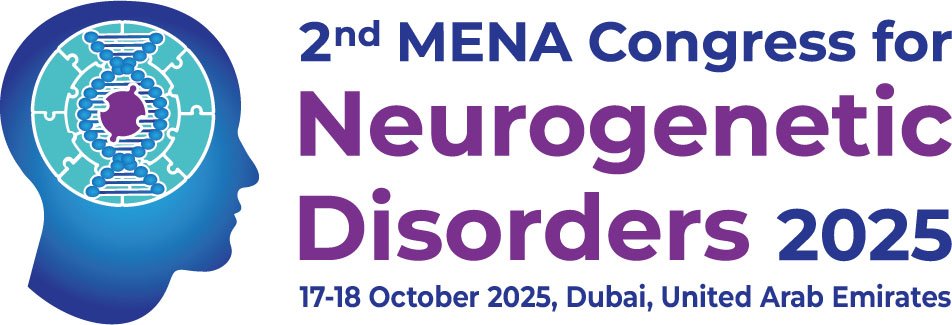
INTRODUCTION: Infertility is inability to achieve a pregnancy despite regular unprotected intercourse for one to two year(s) in the absence of any known reproductive disease. This can be as a result of a problem in either the male or the female reproductive system, or, in some cases, from a combination of problems in both.
Infertility may be primary when no previous pregnancies have been recorded or secondary when previous pregnancies have resulted irrespective of the outcome of these pregnancies.
Incidence: In the western world and most developed countries, about 10-15% of married couples are affected by infertility.
In Nigeria, according to Agboola et al, the incidences varies from 20%-30% and it is estimated that 30% – 40% of women in Africa would complete their reproductive years without having a child, while approximately one in every 20 men are infertile. This exists despite the growing concern about population growth in Nigeria and Africa at large. Infertility is now a public health concerns hence the need for this awareness.
Facts: It has been established that ovulation is a mid-cycle occurrence, so for a woman with normal menstrual cycle of 28 days, ovulation occurs around day 14; for 30 day cycle-day 15; for 32 day cycle- day 16 etc. And the average survival time of the oocyte (egg) is around 12-24 hours while after ejaculation sperm may survive for up to 3-7 days in the female reproductive tract. As such up to 90% of couples will have conceived after regular unprotected intercourse for a year or two. Couples that want to conceive are encouraged to have intercourse around this period of ovulation- targeted intercourse.
Predisposing factors to infertility: Some factors may adversely affect fertility and thus lead to sub- fertility/infertility.
Alcohol- Excessive alcohol is harmful to the foetus and affects sperm quality.
Smoking -Reduces fertility in females and semen quality in males.
Age-Natural conception declines significantly in the female after 35yrs of age.
Frequency of sex-Stress and anxiety may affect libido and frequency of sex and hence impact on fertility. Ash Monga and Stephen Dobbs recommended a coital frequency of 2-3 times per week.
Body weight-Over or under weight can affect ovulation, women with body mass index (BMI) of > 29kg/m2 or < 19kg/m2 may experience difficulty taking in.
Drugs- Some drugs affect ovulation as well as sperm quality. So always consult with your doctor before taking any medication.
Occupational Hazard- Exposure to chemicals and radiation affects male and female fertility.
Causes of infertility in both females and males.
The main cause of female infertility can be related to hypothalamic-pituitary-ovarian (HPO) axis dysfunction, ovulatory disorder secondary to ovarian factors, tubal disease and endometrial or cervical factors.
While in men, 85% are due to sub optimal semen quality and azoospermia. Coital dysfunction and immune factors contribute to the rest. Any factors whether genetic, physiological, and pathological or mechanical that affects the spermatogenesis process from the production time to ejaculation will influence male infertility.
Primary investigations for female.
Baseline pelvic scan: Pelvic ultrasound is done to check the position of the uterus and to ascertain if there are fibroids or polyps that could be a factor. The ovaries and endometrial plate are scanned and measured.
Female hormonal assay: This is a test for menstruating women that have not gone through menopause. The sample is taken Day 2-Day 6 of the cycle as well as day 21-day 23 depending on the hormone to be assayed and patient’s cycle. The female hormone measured in this test include :
a) Oestrogen
b) Progesterone
c) Lutenizing hormone (LH)
d) Follicle stimulating hormone (FSH)
e) Prolactin etc
And levels of these hormones vary according to certain pattern during the menstrual cycle. If there is problem with the hormonal cycle, then it can lead to problems such as irregular periods, heavy periods, absent periods, pre-menopausal syndrome (PMS) or infertility. This test is valuable and gives your doctor information about your hormonal cycle and aids him to determine the best treatment course for you.
Who should go for female hormonal assay?
This test is available to all women before menopause. It would be particularly valuable for those with the following health challenges.
Infertility or difficulty in getting pregnant
Pre-Menopausal syndrome (PMS).
Any period problems, including absent periods, heavy periods, irregular periods, painful periods or any others as may be directed by your Doctor. For those with any of these problems, it could be argued that they should have this test every 12- 24 months.
HSG (Hysterosalpingogram): This is an x-ray contrast investigation used to ascertain the patency of the fallopian tubes as well as assess the endometrial cavity and cervix. It is normally done after menstruation within day 7-10 of the female menstrual cycle. The procedure involves the passage of a sterile speculum via the vagina so that the cervix is clearly seen and a dye (contrast agent) is injected into the uterus with the aid of catheter. A series of X-rays are then taken whilst the dye is being passed through the uterus and fallopian tubes. The importance of this test in fertility work-up is unparalleled as it has both diagnostic and therapeutic qualities.
Sono-HSG: This procedure is like HSG except that ultrasound is used instead of X-ray in the image acquisition.
Folliculometry: This is a serial trans-vaginal/ trans-abdominal study carried out to monitor follicular growth and to ascertain ovulation. Folliculometry is one of the most accurate methods of ascertaining ovulation and is the basic procedure for most infertility treatment. It is started from day 7-8 of the menstrual cycle-counting from the first day of menstruation. So in a routine ultrasound for folliculometry, a woman could be scanned over 3-5 times.
Infection tests: It is a routine and always advisable that women go for infection tests like HVS- High vagina swab, Urine M/c/s, HIV, Chlamydia, Herpes, Syphilis, Gonorrhoea,VDRL, Hepatitis B and C test as part of screening investigations before proceeding with other tests for fertility work-up.
Trans-vaginal scan (TVS): This is becoming the dominant technique used for the examination of the female pelvic structures. It gives a far superior detail of the pelvic structures (ovaries, endometrium and myometruim) to that obtained with the transabdominal approach. Here, the ultrasound probe will be covered with condom and lubricating gel and it is inserted into the patient’s vagina.
TVS is important whenever greater detail is required for example in the following:
Infertility.
Early pregnancy
Ectopic pregnancy.
follicle monitoring and egg retrieval
Threatened abortion.
A questionable adnexal mass
Intrauterine pathology and monitory of endometrial thickness
An abnormal physical exam9.To check for cyst or fibroids.
Unexpected vaginal bleeding.
Pelvic pain.
Placenta Previa (a low lying placenta).
Chorionic villi sampling.
Primary investigations for males.
Seminal fluid analysis (SFA):SFA is the most important assessment of the male factor since about 85% of male patients have sub-optimal semen. Semen is best produced for analysis by masturbation. It is recommended that the male abstains from sexual intercourse 48-72 hours prior to producing the sample. Condoms should not be used because it has spermicides. Based on the known variability in the results of semen analysis, a final diagnosis based on the quality of semen should only be made after three conservative analyses at least three weeks apart.
Male hormonal assay: This aid to rule out hormonal related infertility as well as obstruction in the seminiferious tubules in cases of azoospermia and some non- specific male factor infertility. Hormonal imbalance in males which can be treated if diagnosed is not an uncommon cause of infertility among men in our environment. From a study done in University of Maiduguri Teaching Hospital here in Nigeria, it was established that most men with infertility has hormonal imbalance.The male hormone measures in this test include :
a) Lutenizing hormone (LH)
b) Follicle stimulating hormone (FSH)
c) Prolactin
d) Testosterone:
Testosterone is a sex hormone produced mainly in men but also in women. It regulates sex drive (libido) bone mass, fat distribution, muscle mass, and male sex characteristics while FSH stimulates the testes to produce mature sperm and androgen binding protein. Lutenizing hormone (LH) stimulates cells in the testes to produce testosterone. Testosterone provides negative feedback to the pituitary and the hypothalamus, helps to regulate the amount of lutenizinghormone secretion. Any alteration in this regulatory mechanism will lead to hormonal imbalance. WHO SHOULD DO
A MALE HORMONAL PROFILE?
If you are a man struggling with:
male infertility (low sperm count)
low sex drive c. erectile dysfunction
moodiness e. loss of muscle tone
increased body fat
Infection tests:just as it is advisable for women to go for infection tests before proceeding with other tests for fertility work-up, men too are not left out because it has been shown from studies that often times men are asymptomatic carriers of some of these disease pathogens. Hence, going for infections tests like Urethral swab, VDRL, Urine M/c/s, HIV, Chlamydia, Herpes, Syphilis, Gonorrhoea, Hepatitis B and C test as part of screening investigations will be very beneficial. Others test for male patients include:
Scrotal scan
Urethra swab and Urine M/c/s
Prostate scan
Vasography
Knowing that, ‘without accurate diagnosis there is no such thing as a tailored treatment’, CANAANSHORE MEDICAL DIAGNOSTICS is always at your service with a great difference to assist you in attaining your desired goals.
By:
Anthony Okoye,
MRI Diagnostic Centre,
Ikeja, Lagos
REFERENCES
Otunu J.A.M Infertility. In: Akin Agbola, editor. Textbook of obstetrics and gynaecology for medical students 2nd ed. Nigeria: Heinemann; 2006.
Susan B. etal. Subfertility. ln: Ash monga, Stephen Dobbs, editors. Gynaecology by Ten Teachers 19th ed. London: Book power; 2011.
The British Medical Association illustrated medical dictionary. ed. 2008.
Infertility initial investigations http://www.ivftraining.comRetrieved on July 22, 2014.
Female hormonal profile http://www.users.gblobenet.com. Retrieved on July 21, 2014.
Hormonal profile http://www.healthscopepathology.com.au. Retrieved July 22, 2014.
Hormonal profile http://www.wimbledonclinic. co.uk. retrieved on July 21, 2014.
Hormonal profile http://www.biohealthlab.comretrieved on July 22,2014.
Shettles L.B. mad Rorvik D.M. How to choose the sex of your baby; The method best supported by scientific evidences. 6th Ed. New York: First three Rivers; 2006.
Geidam A. D et al Hormonal profile for men investigated for infertility at University of Maiduguri in northern Nigeria. Singapore Med J. 2008 Jul;49(7).
Men’s infertility profile http://www.healthcheckusa.comretrieved on July 21, 2014.
Sanders R.C. Infertility for ovulation Induction. In: Sanders R.C. editor. Clinical sonography: A practical guide. 4thed. New York: Lippincoh; 2006.13.Jaime Heruden. Transvaginal ultrasound. http://www.healthline.com/health. retrieved on july 22, 2012.












infertility: this is the inability to achieve pregnancy despite unprotected intercourse for one or two years. without any known reproductive diseases.
this can be as a result of a problem in either the male or the female reproductive system, or, in some cases from a combination of problems in both.
infertility is primary if no previous pregnancies have been recorded. it is secondary if pregnancy had been recorded irrespective of the outcome of such pregnancy.
research have shown that 10-15% of married couples are affected by infertility.
In Nigeria, according to Agboola et al, the incidences varies from 20%-30% and it is estimated that 30% – 40% of women in Africa would complete their reproductive years without having a child, while approximately one in every 20 men are infertile.
it has been established that female ovulation is a mid cycle occurrence.
oocytes can survive up to 12 to 24 hours.
sperm can survive for 3-7 days after ejaculation in the female reproductive tract.
As such up to 90% of couples will have conceived after regular unprotected intercourse for a year or two.
the following factors may cause infertility.
alcohol
drugs
age
smoking
body weight
occupation hazard.
series of tests can be carried out on male and female to check cause of infertility.
Primary investigations for female.
Baseline pelvic scan
Female hormonal assay
HSG (Hysterosalpingogram)both diagnostic and therapeutic qualities.
Sono-HSG
Folliculometry
Trans-vaginal scan (TVS).
primary investigation for male include.
Seminal fluid analysis (SFA)
Male hormonal assay
Infection tests
Scrotal scan
Urethra swab and Urine M/c/s
Prostate scan
Vasography
Infertility is the inability of a woman to conceive a child, I.e. get pregnant even after several months of having unprotected sex, without having any reproductive diseases..
Most times the husband and wife are usually both tested so as to know where the problem is coming from…..
several tests including SFA I.e. seminal fluid analysis, TVS I.e. transvaginal scan….and also HSG is a type of x-ray examination carried out for further evaluation of the female.
…
Very enlightening and informative aarticle. Infertility cases is getting more numerous in Nigeria despite the steady rise in population.
Infertility can be from males or females. The main cause in females is hypothalamic pituitary(HPO) axis dysfunction, ovulatory disorder secondary to ovarian factors, tubal disease and endometrial or cervical factors. While in men,85% are due to sub optimal semen quality and azoospermia.
Primary investigations for females include; baseline pelvic scan,HSG(Hysterosalpinogram), sono-HSG,Folliculometry.
For men, SFA(Seminal fluid analysis) and male hormonal assay.
Excessive alcohol affects the sperm quality and smoking affects the semen quality.Alcohol also affects the foetus.
It is advised that couples who are willing to have a baby should reduce alcohol intake or totally steer clear of alcohol and smoking.
Very insightful. Amusing though, how we have this infertility cases, and there’s still a rise in population. This article alerts couples intending to have children when, and how to go about it. There are also detrimental actions that cause infertility like alcohol and smoking.
Infertility is inability to achieve a pregnancy despite regular unprotected intercourse for one to two year(s) in the absence of any known reproductive disease. This can be as a result of a problem in either the male or the female reproductive system,or in some cases, from a combination of problems in both.
Infertility may be primary when no previous pregnancies HV resulted irrespective of the outcome of these pregnancies.
In Africa it is believed that inability of couples to reproduce lies in the hands of the women. I think the public should be enlightened how infertility can affect both genders
Improvements in fertility treatment have made it possible for many women whose male partner is infertile to become pregnant. These new and advanced technologies include in vitro fertilization (IVF), intracytoplasmic sperm injection (ICSI), and other similar procedures.
The main cause of female infertility can be related to hypothalamic-pituitary-ovarian (HPO) axis dysfunction, ovulatory disorder secondary to ovarian factors, tubal disease and endometrial or cervical factors.
infertility: this is the inability to achieve pregnancy despite unprotected intercourse for one or two years and this can be as a result of a problem in either the male or the female reproductive system, or, in some cases from a combination of problems in both.
infertility is primary if no previous pregnancies have been recorded. it is secondary if pregnancy had been recorded irrespective of the outcome of such pregnancy.
Comment: infertility is the inability of a couple to attain pregnancy after having unprotected sex for a year or two..most people think it’s only women dat can be infertile ..
Men the females with infertility problem should go for infection test before going for infertility test
People should be enlightened on the causes of infertility like smoking, drinking and the likes. Also, couples should go for check-up in cases of infertility and not start blaming the woman on not bearing a child.
Alcohol,weight,smoking and frequency of sex are some factors that affect infertility in women